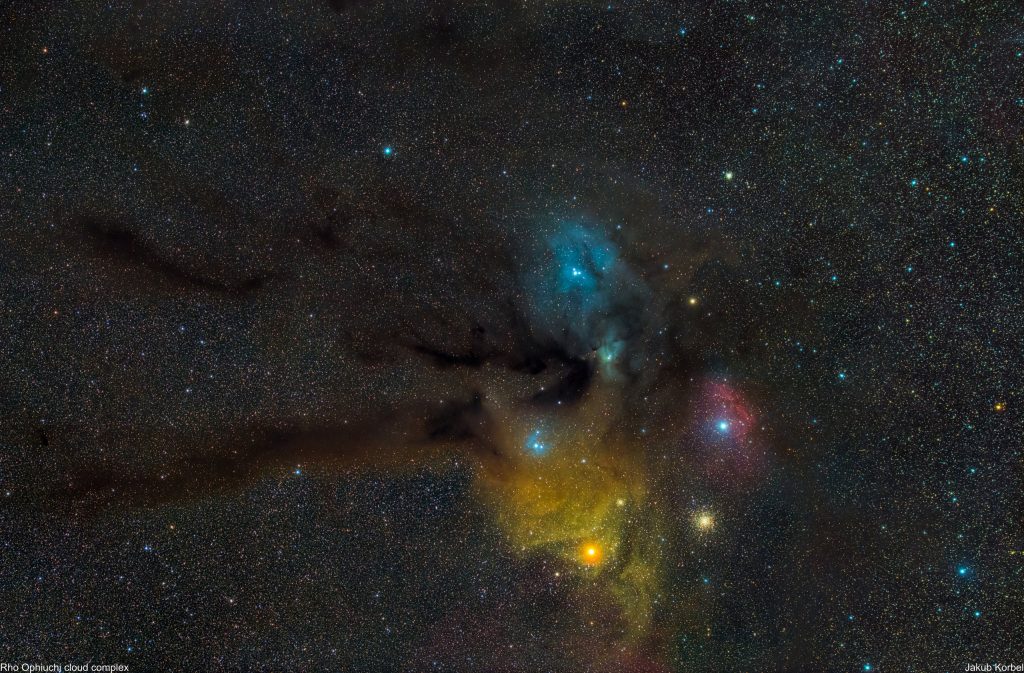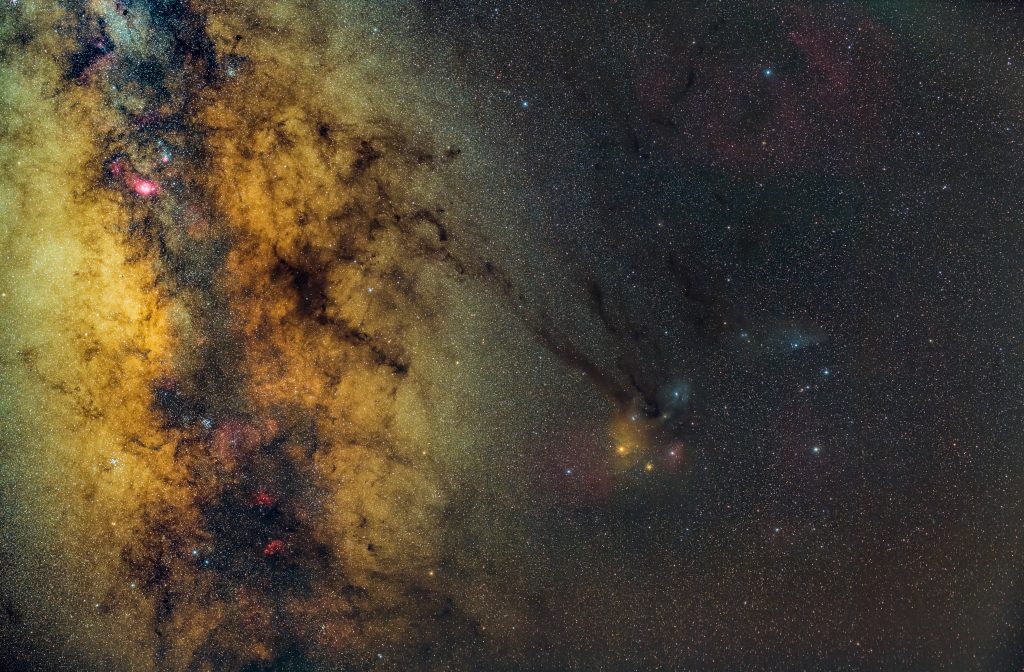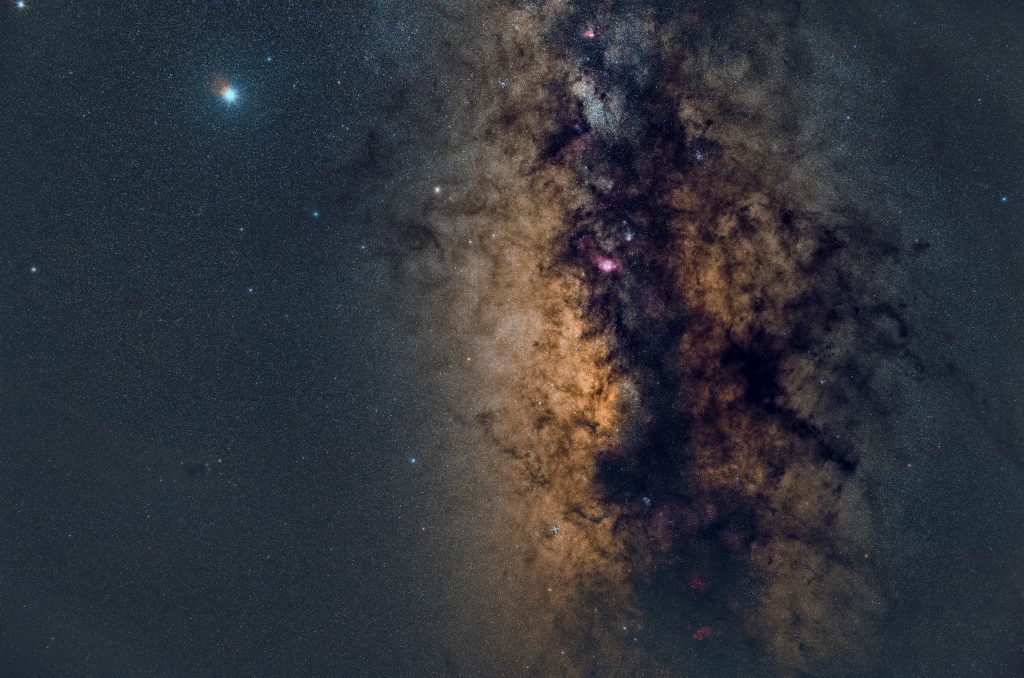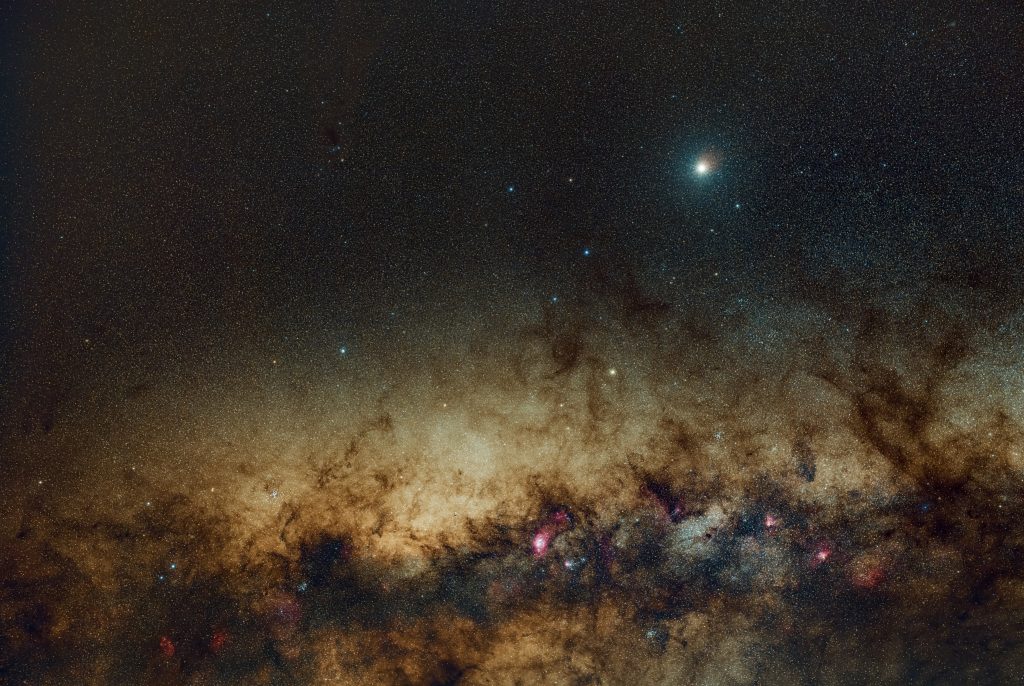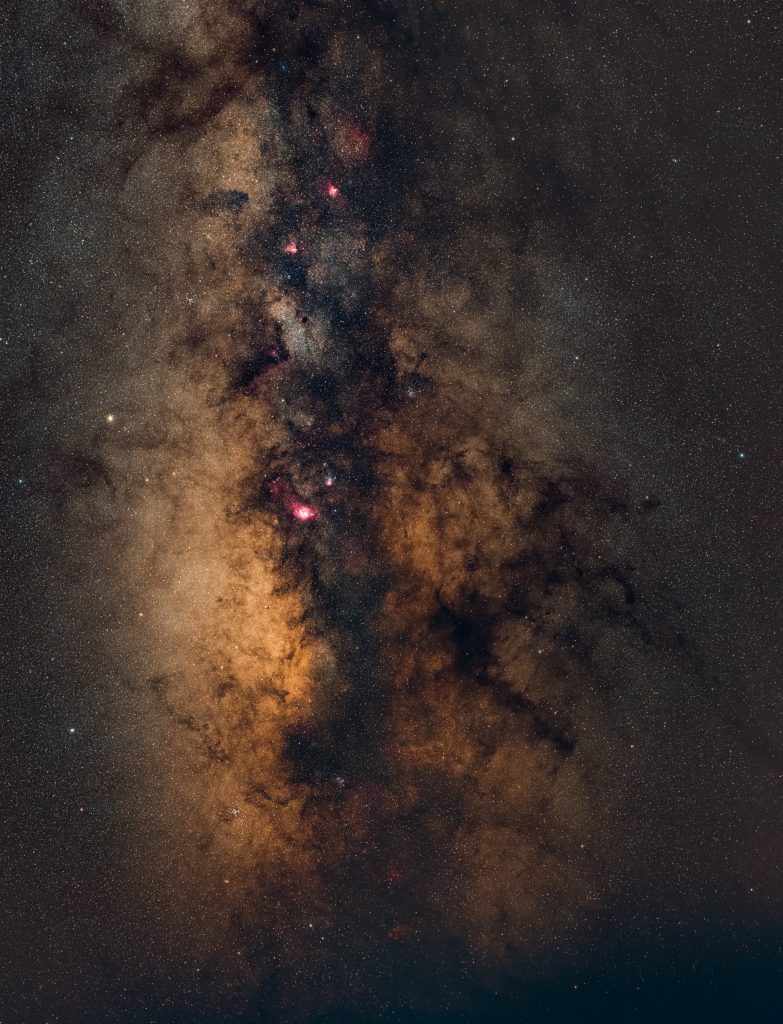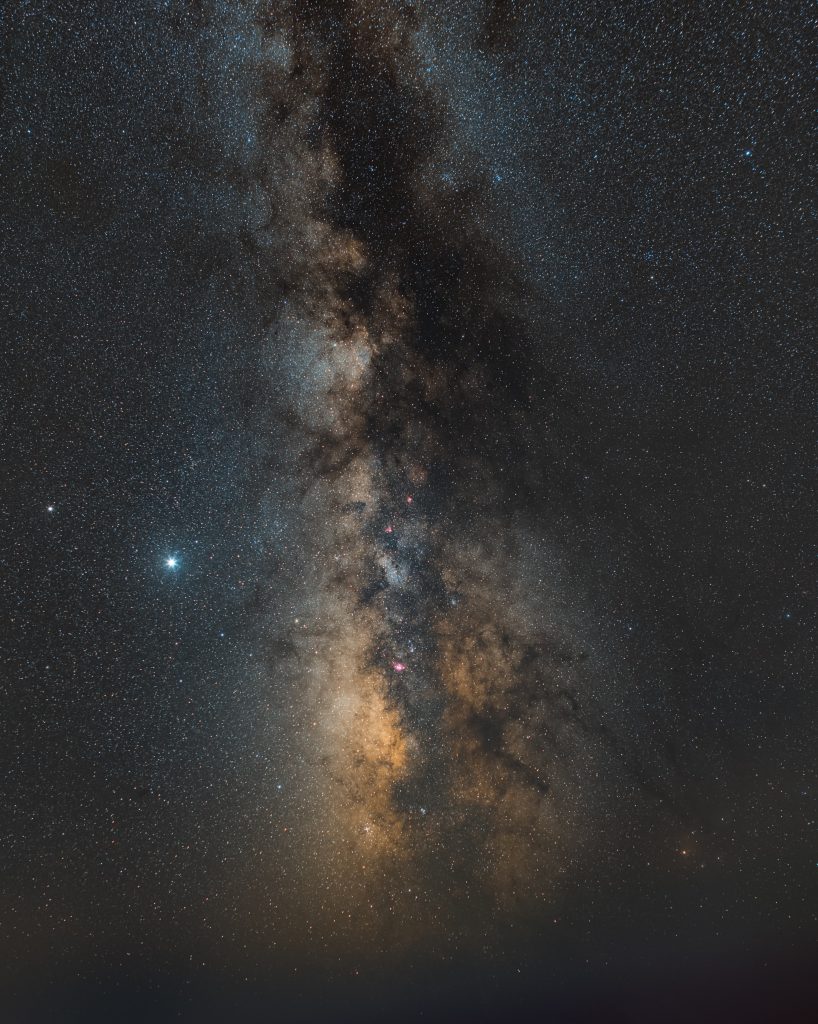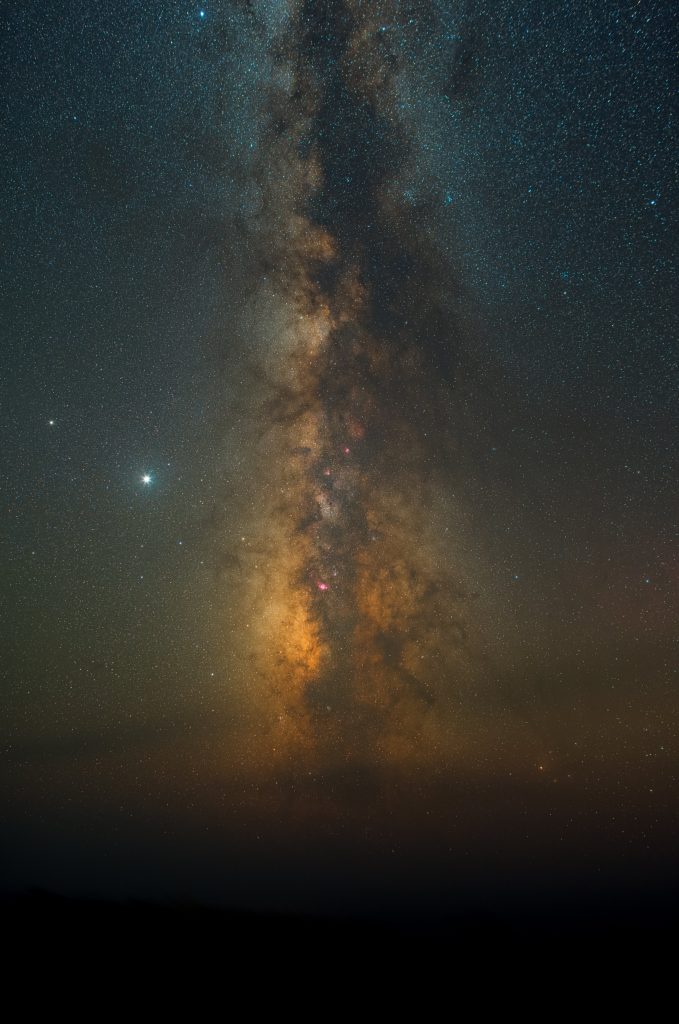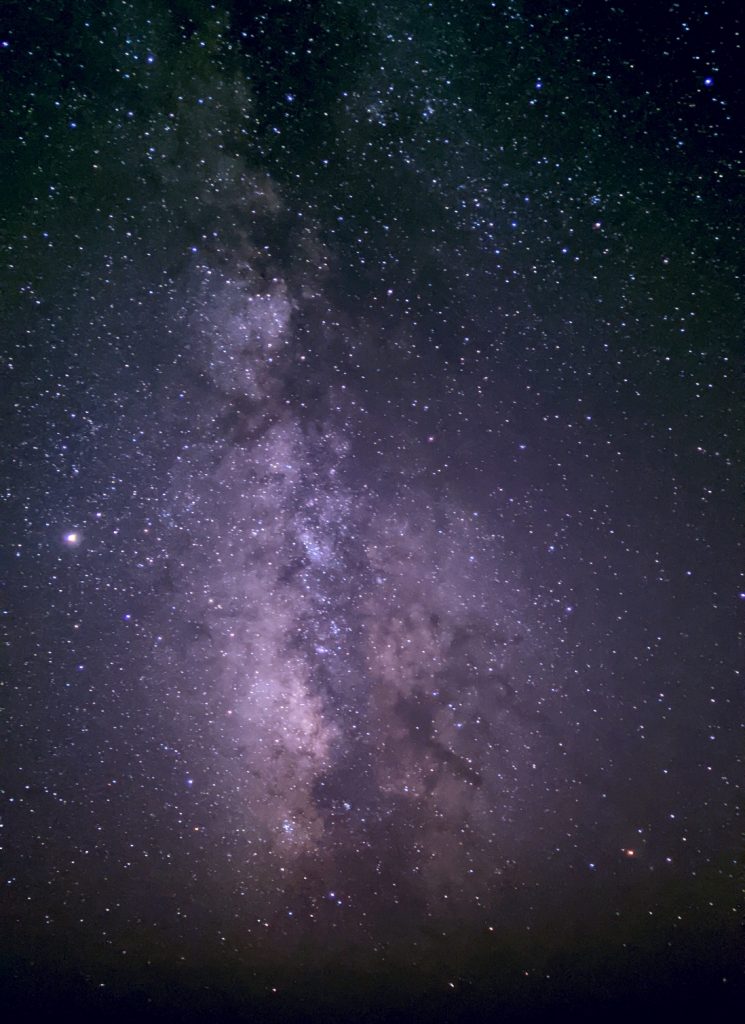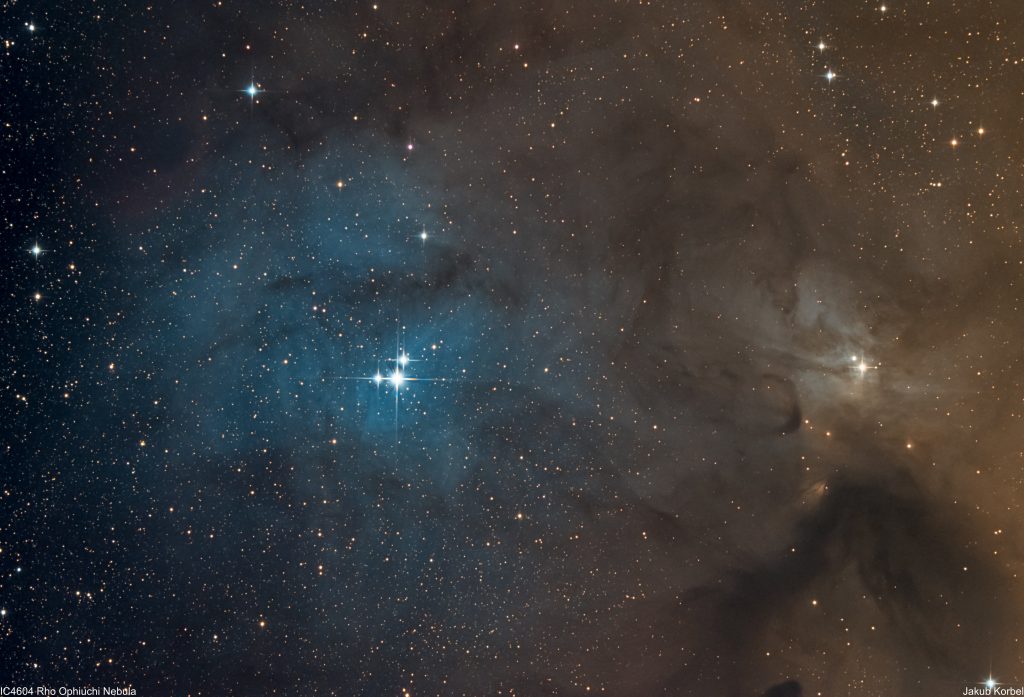The Rho Ophiuchi cloud complex is a dense region of gas and dust located in the constellation Ophiuchus, near the border with Scorpius. It is one of the closest star-forming regions to Earth and contains a number of young, hot stars as well as protostars still in the process of forming. The cloud complex is known for its striking red and blue colors, caused by the presence of ionized gas and reflection of starlight off dust grains. Basically, nearly all the colors of the universe can be seen here.
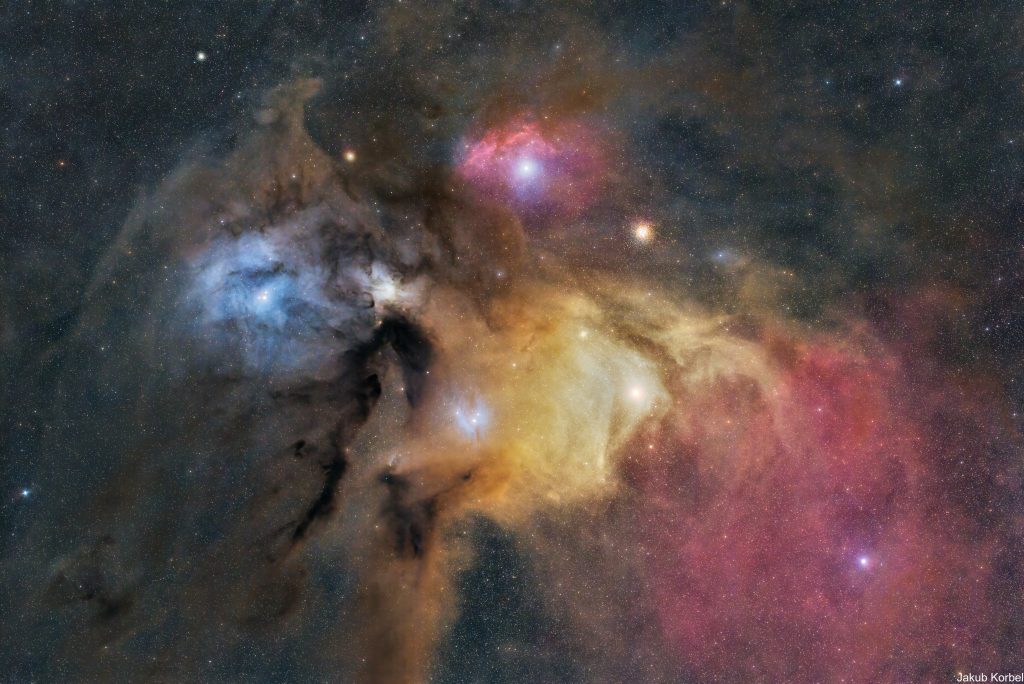
| Telescope | William Optics RedCat 51/250 f4.9 |
| Aperture | 51 mm |
| Focal length | 250 mm |
| Mount | iOptron Skyguider Pro |
| Autoguiding | ZWO 178MM, QHY Mini Guide Scope 30/130 mm |
| Camera | Canon EOS 6Da |
| Filters | none |
| Exposure | 60x120s, ISO 1600 |
| Date | 2022-05-29 |

